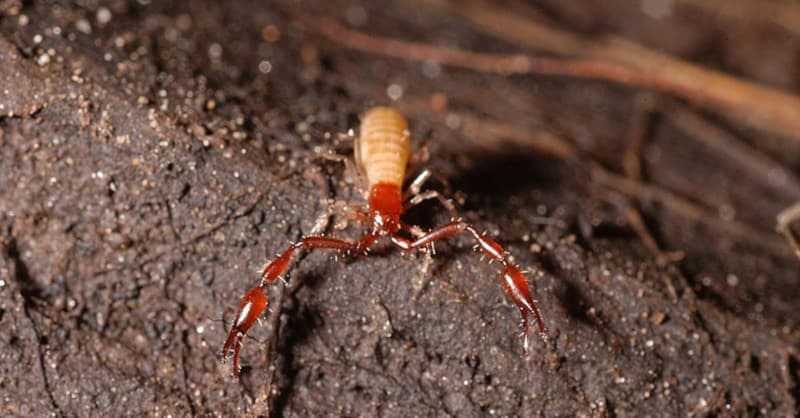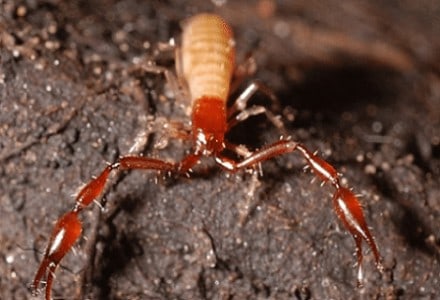
Yosemite Cave Pseudoscorpion Facts
- What a terrifying creature the newly discovered Yosemite Cave Pseudoscorpion appears to be. Yet despite its fierce appearance, the invertebrate remains harmless to humans.
- Firstly, that occurs because the arachnid stays quite diminutive in size. In fact, it ranks as one of the smallest of all the roughly 3,000 known species of pseudoscorpion on earth.
- Once again Nature has also presented us with further proof of its love of boundless variety in its creatures.
- Finally, as its name implies, this awesome creature resides in deep caves. Even then, however, the Yosemite Cave Pseudoscorpion only seems to exist in a very specific type of cave.
Related Articles
Asian Forest Scorpion Tailless Whip Scorpion Euscorpius Lycius
Yosemite Cave Pseudoscorpion Physical Description
Most notably, the appearance of the Yosemite Cave Pseudoscorpion can be rather misleading. Fortunately for the faint of heart, the fearsome seeming animal only attains a known length of about 0.5 in (1.3 cm).
Further, like all troglobites, the incredible arthropod evolved to possess no eyes whatsoever. Additionally, in color, it generally displays shades of either tan or amber, with reddish-brown legs.
However, this species also possesses two distinct characteristics that set it apart from other known pseudoscorpions.
For one, the pincers grow rather extremely elongated. More uniquely, however, is its other characteristic uniqueness.
Also, by definition, a pseudoscorpion possesses no venomous stinger. The Yosemite Cave Pseudoscorpion does possess venom, however. But in its case, Nature placed it in its claws.
- Kingdom: Animalia
- Phylum: Arthropoda
- Class: Arachnida
- Order: Pseudoscorpiones
- Family: Neobisiidae
- Genus: Parabosium
- Species: P. yosemite
Photographer: Jean K. Krejca
Public Domain Image
Yosemite Cave Pseudoscorpion Distribution, Habitat, and Ecology
Rather sadly, we have extremely little reliable information about the Yosemite Cave Pseudoscorpion. However, experts believe the invertebrate to be insectivorous, preying on numerous insects and small spiders.
The discovery of this remarkable invertebrate occurred in 2010. But even more amazing is the fact that it was entirely by accident. It was found living in two granite talus caves within Yosemite National Park.
This lies in the United States, in North America, where its habitat consists of granite rocks, granite sand, leaf litter, and also piles of debris. Despite 5 years of research, it seems it exists nowhere else.
Finally, researchers postulate that its ancestors may have been trapped when these talus caves first formed. Consequently, in its isolation, it slowly evolved into a distinctly different new species since that time.
Species Sharing Its Range
Check out our other articles on 7 Breathtaking Beaches of the World, Somersaulting Spider, Caracal, Giant Camel Spider, Deathstalker Scorpion, Dallol Hydrothermal Field

